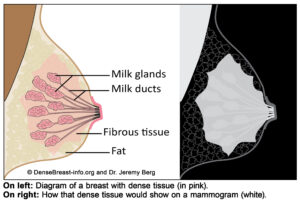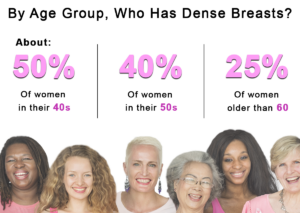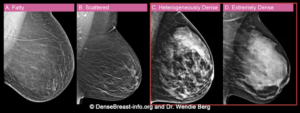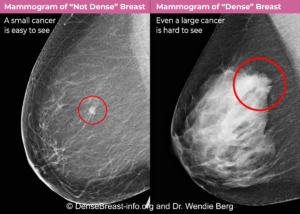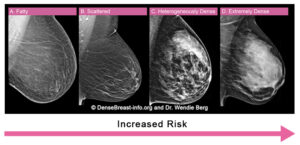
| I have dense breasts…now what? Dense breast tissue increases the risk of developing breast cancer and of having cancer missed on a mammogram. There are additional tests that can help find cancer that may be hidden on the mammogram. Talk with your health professional about these additional tests. |
